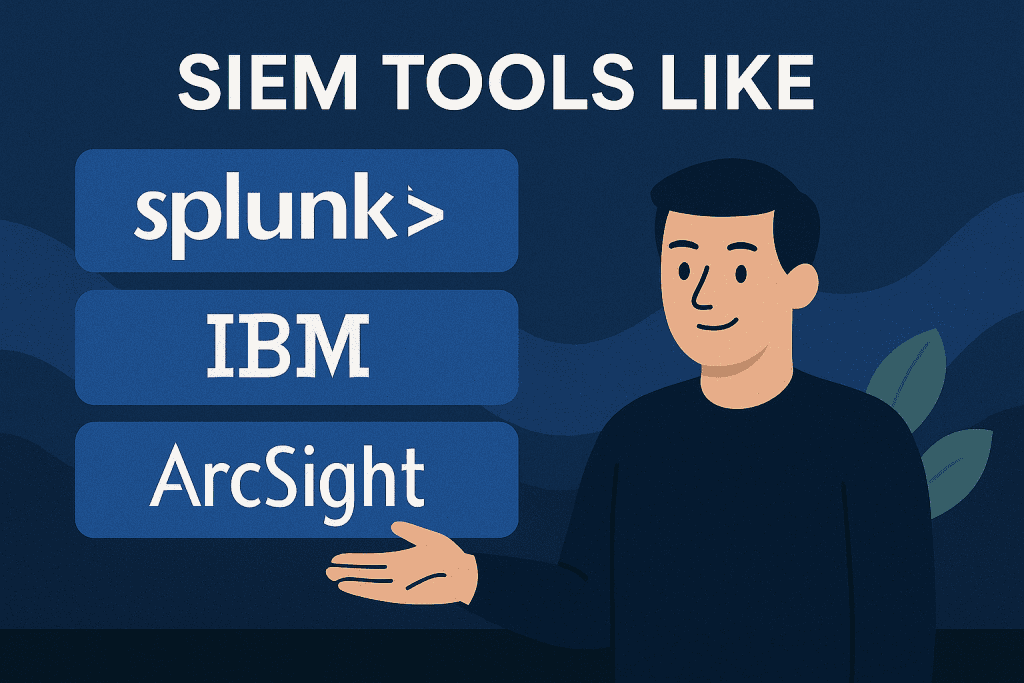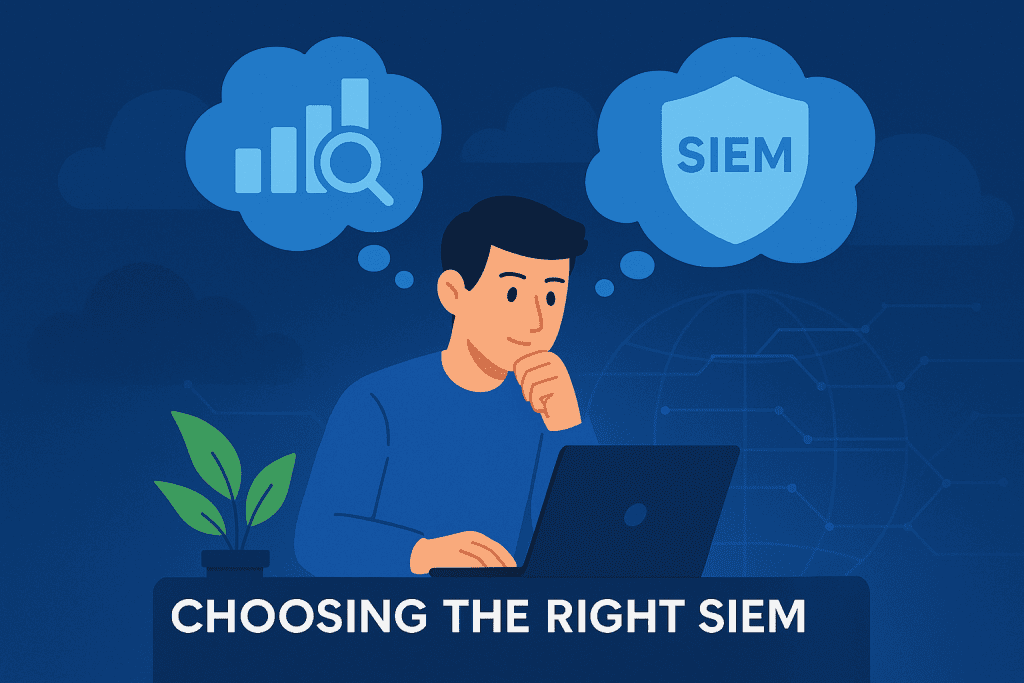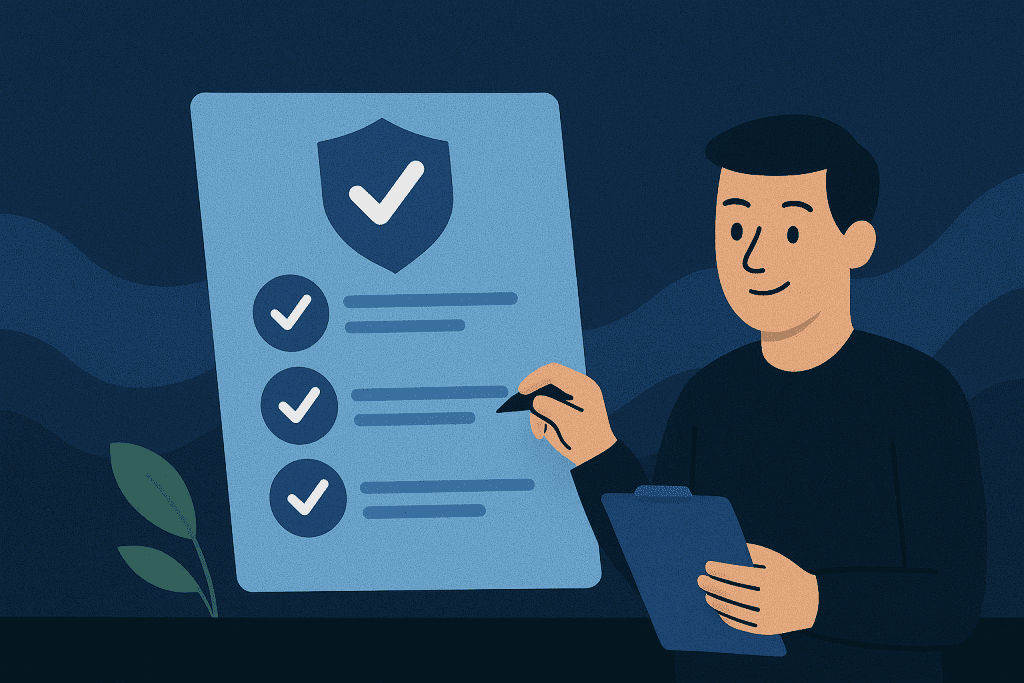In today’s digital world, SIEM tools are essential for protecting businesses from cyber threats. Every organization, from small startups to multinational corporations, faces the risk of data breaches, ransomware attacks, and insider threats. Without a solid cybersecurity strategy, sensitive data can be compromised, leading to financial losses and reputational damage.
Security Information and Event Management (SIEM) tools help businesses monitor, detect, and respond to security incidents in real-time. By analyzing security logs and identifying suspicious activity, these tools play a crucial role in preventing attacks before they cause harm. If you’re looking to enhance your organization’s security posture, implementing a SIEM solution is a game-changer.
This guide will walk you through the step-by-step process of securing your organization using SIEM tools. From assessing your security needs to configuring threat intelligence feeds, you’ll gain a clear understanding of how to maximize SIEM’s potential. For a visual walkthrough, you can also check out this YouTube video on how to secure your organization using SIEM tools. Now, let’s dive in!
SIEM Tools Tools Needed

Before diving into the implementation process, it’s crucial to gather the right materials and tools. Think of this as assembling your cybersecurity toolkit—each component plays a vital role in ensuring an effective SIEM deployment.
| Material/Tool | Purpose |
|---|---|
| SIEM Software (e.g., Splunk, IBM QRadar, ArcSight) | Monitors and analyzes security data |
| Security Logs | Provides historical and real-time insights |
| Threat Intelligence Feeds | Enhances detection of new and emerging threats |
| Trained Security Personnel | Ensures effective monitoring and response |
| Compliance Frameworks (e.g., GDPR, NIST, ISO 27001) | Helps maintain regulatory compliance |
| Network and Endpoint Sensors | Collects critical security data |
Having these essentials in place will make the process smoother and ensure that your SIEM system operates efficiently.
SIEM Tools Step-by-Step Guide

Implementing SIEM tools effectively requires careful planning and execution. This section breaks the process into seven manageable steps, ensuring that your organization gets the most out of its security investment. Each step plays a crucial role in strengthening your cybersecurity framework.
Step 1: Assess Your Security Needs
Before implementing a SIEM solution, it’s important to evaluate your organization’s security needs. Every business has unique vulnerabilities, risks, and compliance requirements, so a one-size-fits-all approach won’t work.
Start by conducting a risk assessment to identify critical assets, potential attack vectors, and common security gaps. Ask yourself:
- What types of sensitive data does your organization handle?
- What are the most common threats in your industry?
- What security measures are already in place?
- Do you need a cloud-based or on-premises SIEM solution?
Once you have a clear understanding of your security posture, you can make informed decisions on the features and capabilities required in your SIEM tool.
Step 2: Choose the Right SIEM Tools
The cybersecurity market is filled with SIEM tools, but not all are created equal. Some solutions prioritize real-time threat detection, while others focus on compliance reporting or AI-driven analytics. Choosing the right tool depends on your organization’s specific needs.
Key factors to consider when selecting a SIEM solution:
- Scalability: Can the tool handle increasing data volumes as your organization grows?
- Integration: Does it seamlessly integrate with existing security tools, firewalls, and cloud environments?
- User-Friendliness: Is the dashboard intuitive, or will it require extensive training?
- Pricing: Does the pricing model align with your budget and needs?
Some popular SIEM tools list includes:
- Splunk: Excellent for real-time security analytics
- IBM QRadar: AI-powered threat detection
- ArcSight: Enterprise-grade SIEM solution
- LogRhythm: Great for automated threat detection
- Sumo Logic: Cloud-native SIEM
By carefully comparing features, customer reviews, and pricing, you can select a solution that aligns with your security goals.
Step 3: Deploy and Configure Your SIEM Tools
Once you’ve chosen your SIEM tool, the next step is deployment. This process involves installing the software, connecting log sources, and configuring detection rules.
Deployment Steps:
- Install the SIEM software on a dedicated server or cloud-based infrastructure.
- Integrate all security log sources, including firewalls, intrusion detection systems, and endpoint protection tools.
- Define detection rules and correlation policies to identify suspicious behavior.
- Set up alert mechanisms to notify security teams in real-time.
A properly configured SIEM solution ensures that security logs are collected and analyzed efficiently, allowing for quick threat detection and response.
Step 4: Integrate Threat Intelligence Feeds
SIEM tools become even more powerful when combined with threat intelligence feeds. These feeds provide real-time data on cyber threats, helping organizations stay ahead of emerging attacks.
By integrating external threat intelligence sources, your SIEM solution can proactively detect and mitigate threats such as:
- Known malware signatures
- Suspicious IP addresses and domains
- Phishing attack indicators
This integration enhances your SIEM system’s ability to detect zero-day threats and sophisticated cyberattacks.
Step 5: Establish Incident Response Procedures
A SIEM system is only effective if it’s backed by a strong incident response plan. When a security alert is triggered, your team should have clear procedures to contain and mitigate the threat.
Key components of an incident response plan include:
- Automated threat containment (e.g., isolating compromised devices)
- Incident escalation protocols for different severity levels
- Reporting mechanisms to notify stakeholders and regulatory bodies
A well-defined response plan minimizes damage and ensures quick recovery from security incidents.
Step 6: Monitor and Analyze Security Logs
SIEM tools generate vast amounts of log data, making continuous monitoring essential. Assign a dedicated security team to:
- Analyze logs for anomalies and suspicious patterns
- Fine-tune detection rules to reduce false positives
- Generate compliance reports for audits
Regular log analysis helps detect insider threats, unauthorized access attempts, and emerging attack techniques before they cause harm.
Step 7: Regularly Update and Optimize Your SIEM Solution
Cyber threats are constantly evolving, and so should your SIEM strategy. To ensure maximum protection, regularly update and optimize your SIEM tool by:
- Applying software patches and security updates
- Reassessing security policies based on new threat intelligence
- Conducting penetration testing to identify vulnerabilities
By keeping your SIEM system up to date, you enhance its effectiveness in detecting and preventing modern cyberattacks.
SIEM Tools Tips and Warnings

No matter how powerful your SIEM tools are, their effectiveness depends on proper management, regular updates, and best practices. In this section, we’ll explore key tips for maximizing your SIEM solution while avoiding common pitfalls.
| Tips | Warnings |
|---|---|
| Train your security team on how to interpret SIEM alerts. | Overlooking SIEM alerts can lead to missed security incidents. |
| Use automation to reduce manual workload. | Misconfigured rules can trigger excessive false positives. |
| Conduct regular security audits. | Neglecting system updates can leave vulnerabilities exposed. |
| Integrate SIEM with other security tools for a layered defense. | Poor log management can overwhelm SIEM systems. |
Conclusion
By implementing SIEM tools, organizations can detect threats faster, ensure regulatory compliance, and strengthen their cybersecurity posture. Whether you’re a small business or a large enterprise, following these seven steps will help you set up a robust security monitoring system.
Now that you understand the power of SIEM solutions, take action! Secure your network, protect your data, and stay ahead of cybercriminals.
FAQ
How do SIEM tools improve cybersecurity?
SIEM tools enhance cybersecurity by collecting and analyzing security logs, detecting threats in real-time, and automating incident response. They help prevent data breaches, malware attacks, and insider threats while ensuring compliance with security regulations.
Are SIEM tools necessary for small businesses?
Yes, small businesses also face cyber threats. Cloud-based SIEM tools offer cost-effective solutions that help detect security incidents, ensure compliance, and protect sensitive data without requiring a large IT team.
What is the difference between SIEM and a firewall?
A firewall blocks unauthorized access to a network, while SIEM tools analyze security logs to detect and respond to threats. SIEM provides a broader security overview by correlating data from multiple sources, whereas firewalls focus on filtering network traffic.
Resources
- HackControl. SIEM Solutions to Protect Your Company
- Palo Alto Networks. How SIEM Tools Benefit SOC Teams
- BitLyft. SIEM Implementation: How to Get Started with SIEM Tools
- FourDTech. Protect Your Organization with Logs and SIEM
- YouTube. How to Secure Using SIEM Tools
